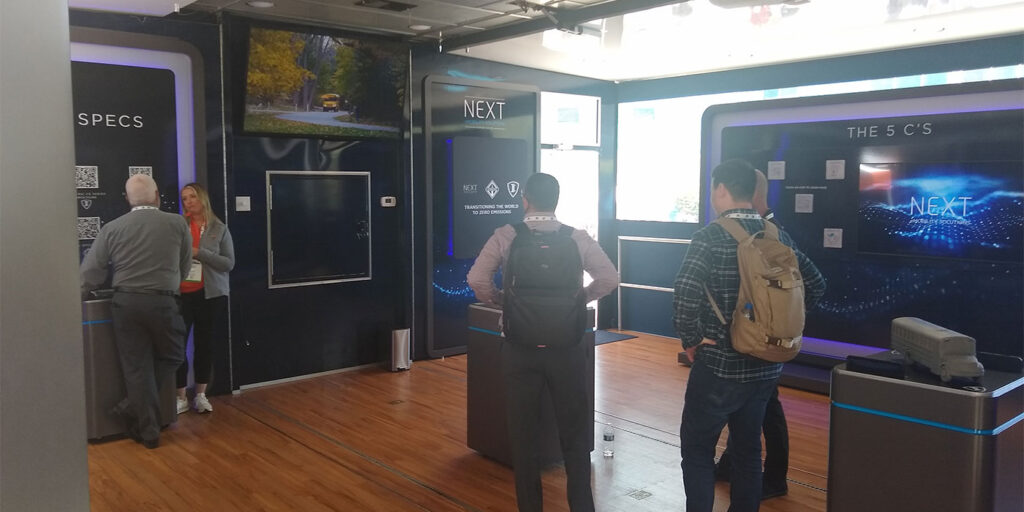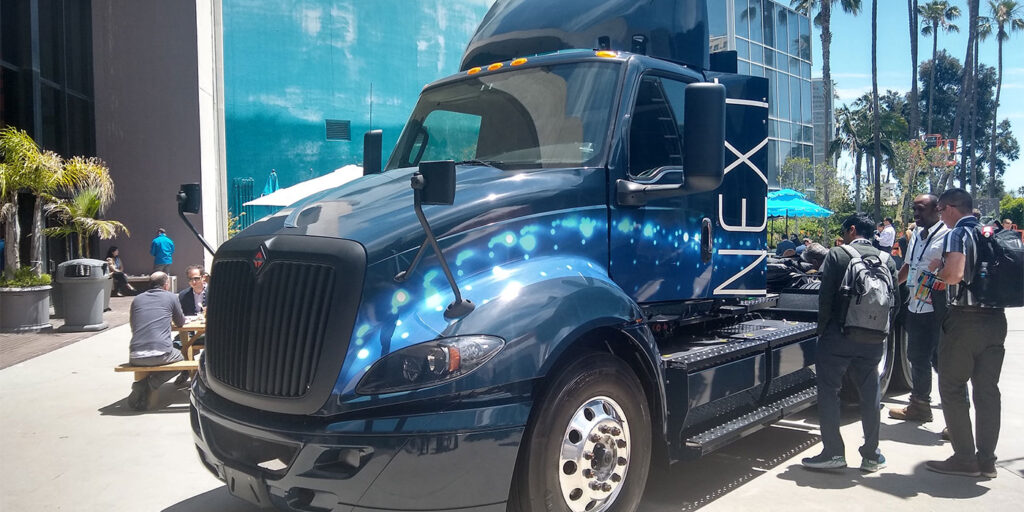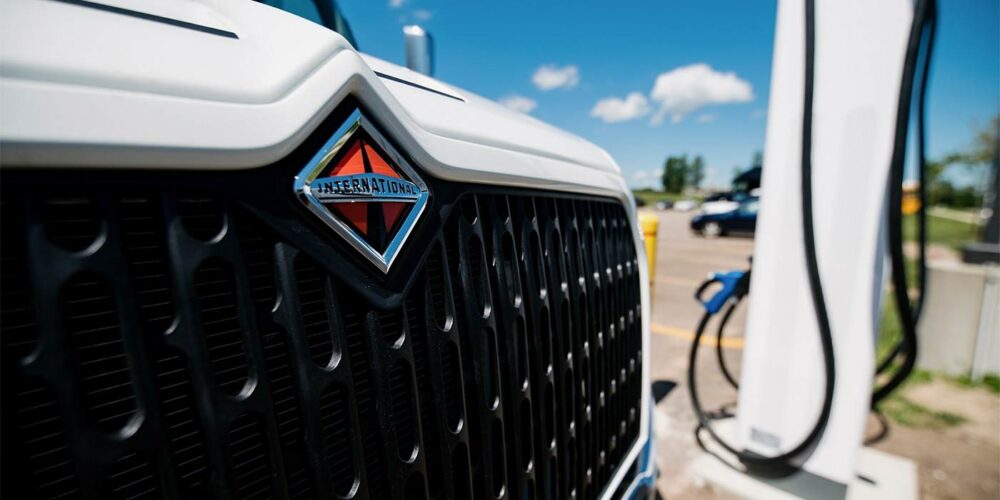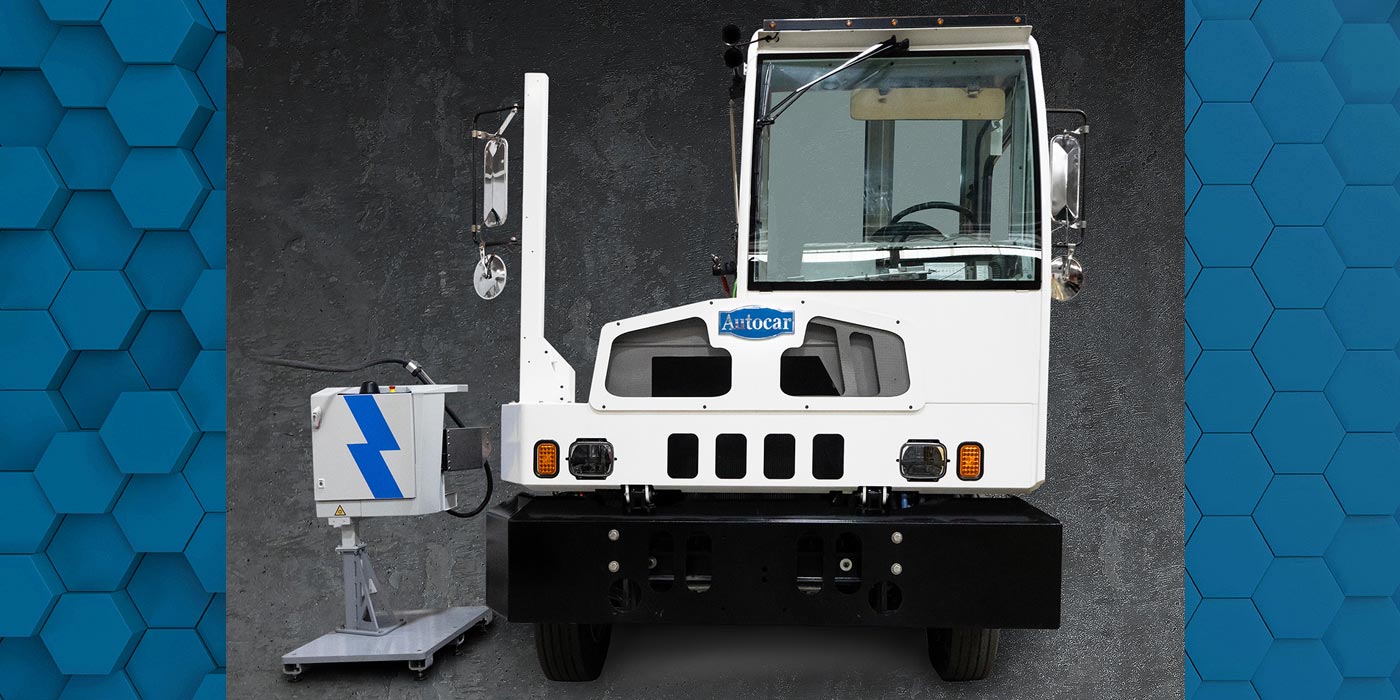The image on the screen behind Navistar President and CEO Mathias Carlbaum during his ACT Expo keynote address was eye opening. It displayed the top 25 countries that use clean energy. Iceland was in pole position with nearly 100% clean energy usage, followed by Sweden and Norway. Even our neighbors to the North were in the top 10 with Canada ranking no. 8. The United States’ position? Not even on the list. In fact, in 2021, renewable energy sources accounted for about 12.2% of total U.S. energy consumption and about 20.1% of electricity generation.
That single presentation slide was at once inspiring and daunting. On one hand, clean energy usage on a national scale can be done and is being done. On the other, the U.S. clearly has work to do if we’re going to move the needle on sustainability improvements. And that’s just what Carlbaum aims to do with Navistar.
In the Navistar NEXT Experience Trailer that showcases the OEM’s zero-emissions technology (and flanked by the appearance of the yet-to-be-announced battery electric International Class 8 concept tractor), I connected with Carlbaum for a conversation focused on one question: How?
Let’s start with the equipment–electric trucks
Fleet Equipment: You have a truck sitting out there that looks like the RH, but there seems to be an electric powertrain on that truck. Is that an electric RH sitting out there?
Carlbaum: “We’re not making any announcement.”
But it is an RH, and it does have a battery bank on it.
“You’re observant.”
We share a laugh. Time for a different approach. The International eMV Series medium-duty battery electric truck was delivered to the first customer–Penske Truck Leasing–back in April. Penske has purchased multiple eMVs to continue its commitment to zero-emissions technology and has started integrating the EVs into its fleet to provide real-world feedback regarding performance.
How’s Penske doing with the International eMV? What feedback have they provided and what are they looking to you to provide as they integrate the electric medium-duty truck into their fleet operations?
“We’re working very closely with them on everything– from the driver’s feedback to their operation and their customers’ questions. Their customers are asking for this. So we’re working together to understand the business model of electrification. I think that will accelerate in the coming years.
“There’s a fundamental cost parity issue here, but when cost parity is realized, EVs will take off.”
So when does that happen?
“So now is a lot of testing and trials. That’s important because we’re moving away from the transactional operation to a relationship operation. We need to come together with our customers to find the place for EVs and take the first step in electrification.
“Right now, we’re taking the right steps to get the right products out and then accelerate what we have learned to bring it to the market. We have enough product to take those first steps with the technology we have today, and we have early adopters here in the U.S. that will play a key part in the development around technology to make this fly.”
Charging it up
Plenty of conversation at ACT Expo, and to this day, centers on the EV infrastructure challenge. Charging consumer vehicles is one thing, but charging medium- and heavy-duty trucks is another. While we used to talk about the “chicken or the egg” when it came to electric trucks and infrastructure–there are a bunch of electric trucks now so it’s time to crack open some eggs and cook up charging infrastructure.
What are you seeing on the infrastructure side? And what are you doing that makes you hopeful that we can overcome this obstacle?
“When it comes to infrastructure, we are starting to dig where we stand. Look at what’s happening with the bus market. It’s happening very fast. Bus fleets are coming to us with open arms asking questions that will be answered with key solutions. Call it: business model thinking. We can be consultative, partners in this.
“Of course, battery technology–the chemistry, solid-state–needs to advance so that they can take all of this juice, but we’re not that far away. Perhaps five years away from now. I think that’s when we’ll start seeing the business case at further application distances.
“But you used the word, ‘obstacles.’”
Yeah.
“Truly, and I’m not naive at this point, I believe there are big interests around making this happen. There are so many different players and investors looking at this as a long-term return on investment that’s stable over time. So I don’t see money as the issue.”

Regulators, mount up
The regulation and government incentive and funding question was much murkier during ACT Expo in May, but what a difference a couple of months make now that the U.S. passed a nearly $370 billion energy and climate spending deal. While big step has been taken nationally, there are plenty of more miles to walk down the path of increased sustainability. Regulation will continue to play a large role.
“Regulators have to push; utility companies, also, have to push,” Carlbaum said. “There’s much wealth to be gained in getting ahead of the sustainability curve.”
More on Navistar on … Navistar on Navistar
If you missed our first story with Navistar’s (relatively new) president and CEO, click below to catch up on the series of stories that outlines Carlbaum’s vision for the truck OEM going forward.














